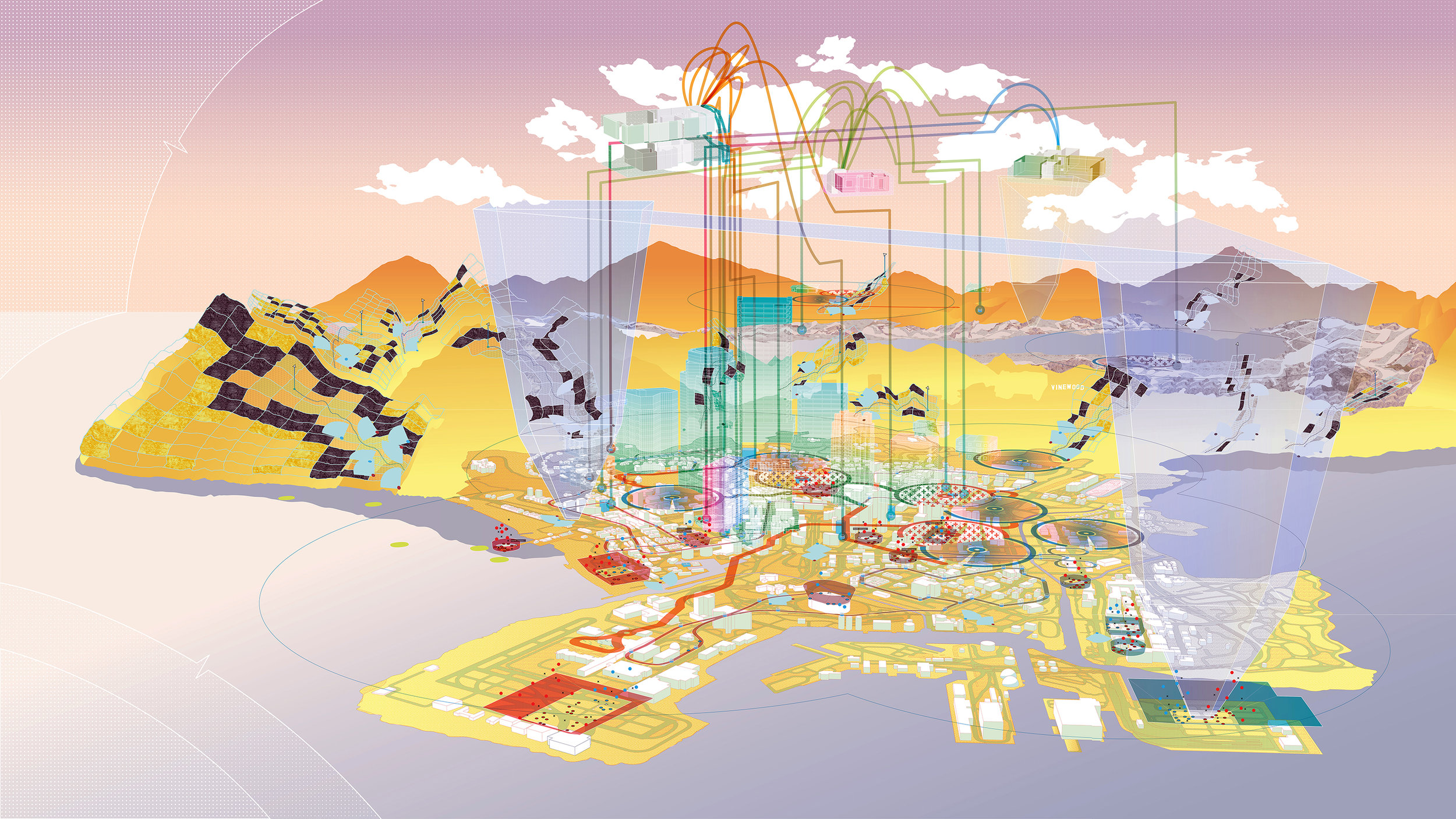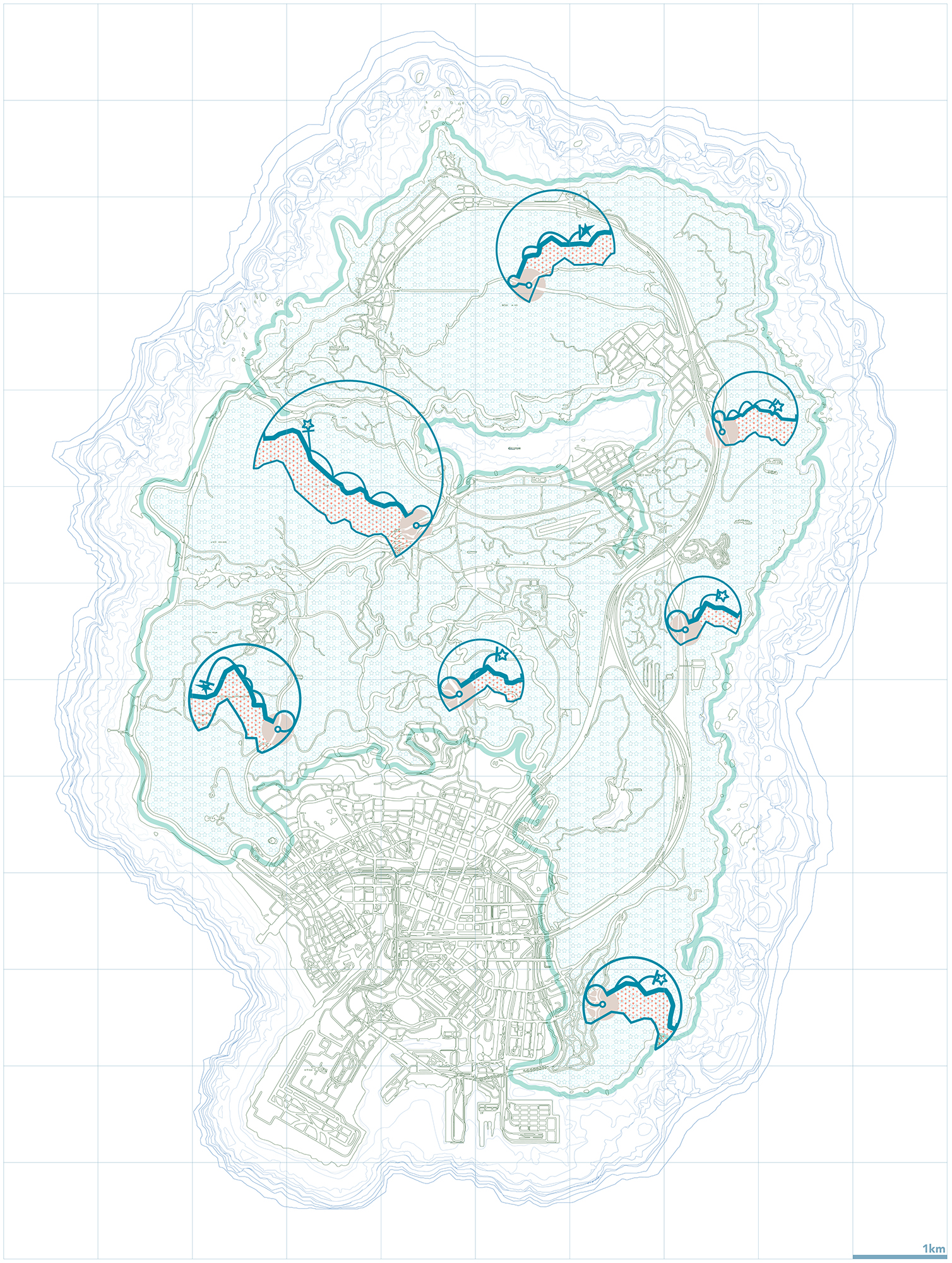Learning from Los Santos
Learning from Los Santos is an ongoing research project into the facsimile Los Angeles that underpins the best-selling game Grand Theft Auto V by Rockstar Games.
The project draws from Robert Venturi, Denise Scott-Brown and Stephen Izenour's analytical frameworks developed in their seminal book Learning from Las Vegas in order to interrogate Los Santos as an urban construct. Venturi, Scott-Brown and Izenour framed their study of Las Vegas as one of 'method not content,' and in a similar fashion my own research into Los Santos investigates the mechanisms by which the city is mediated to the player, rather than the deviant ideology of the city as presented in the story itself. This research utilises various tools of architectural analysis, from cartographic drawings and re-modelling of spaces, through to screenshots as documentary photography, to critical writing and the production of secondary texts and books.
Writings and works developed in this project have been featured in papers and articles in journals such as Architectural Research Quarterly, OFFRAMP: New Losangelisms, Inflection Journal and a number of forthcoming publications.
Los santos mural
Media theorist Lev Manovich discusses the history of virtual image spaces in relation to the tradition of the fresco or mural in architectural space. As our virtual avatars become more mobile, he argues, we become more sedentary. Los Santos is a city of total mobility, down to the ease with which we can change out vehicle. By transcribing some of its systems into a room-scale mural drawing, the viewer is forced to become mobile in order to view the extents of a static image, inverting the situation we find ourselves in when playing GTA V.
CARTOGRAPHY: MEGATEXTURE
Venturi, Scott-Brown and Izenour described the carpets of parking lots outside Las Vegas casinos as a 'megatexture.' In Los Santos, the megatexture could describe the place where players are at their most mobile, leaving the roads to escape the police. Cartoonish vehicle physics means an alternative reading of the streets of Los Santos might find the non-tarmacked surface as the real site of mobility.
CARTOGRAPHY: INFRASTRUCTURE
While Los Santos is framed as a city for the deviant and individualistic, comparing the public infrastructure presented across the island to the real Los Angeles shows that it is a rather well supported city.
LoNG ZOOM LANDSCAPE
To hide the streaming of world information, GTA V uses a zooming pseudo-satellite view to connect the three protagonists across the space of the city. This connection from the ground, to the orbital and back again is a form of the 'long zoom' aesthetic outlined by Stephen Johnson, where new technologies allow us to see our world through huge scale shifts. Seeing Los Santos from this Google Earth-esque position visually legimitises it as a city while also hiding the loading process. These drawings are a series of spatial transcriptions of the flights taken by my character when loading missions in GTA: Online, turning the movement of the loading screen into a continuous spatial journey that takes place at multiple scales.
Six different missions as experienced by my GTA: Online character, where the satellite view loading screen connects different areas of the city and scales of activity are compressed into an architectural landscape of the 'long zoom.'
The journeys articulated through the loading screen are a reinforcement of the spatial disconnection that has been ever-present in GTA games since the introduction of interior space to their world. The infamous Hidden Interior Universe of GTA: San Andreas being another notable case of players discovering how the game hides portions of its world from view.







